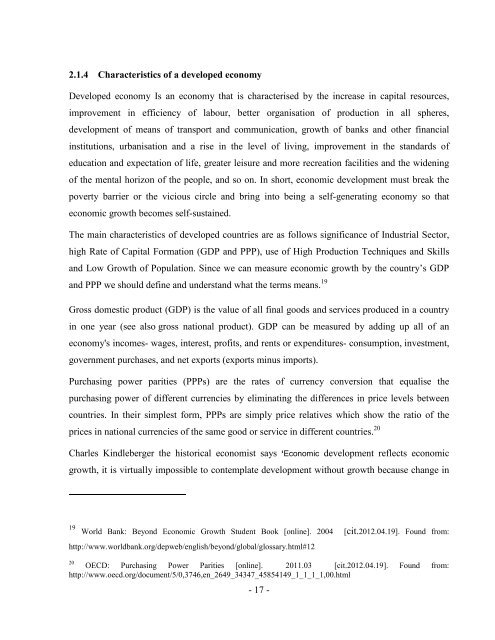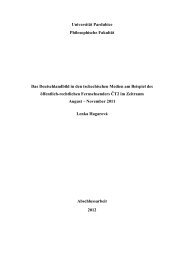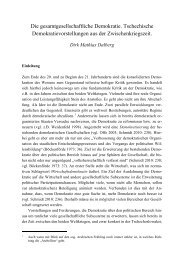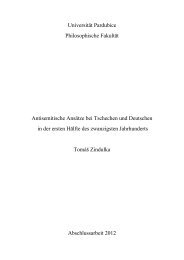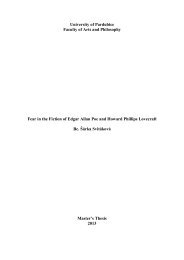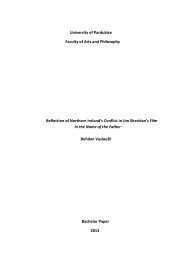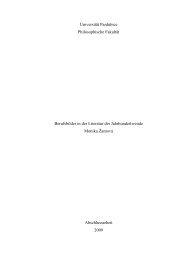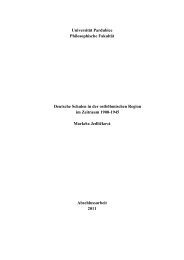University of Pardubice Jan Perner Transport Faculty Transport and ...
University of Pardubice Jan Perner Transport Faculty Transport and ...
University of Pardubice Jan Perner Transport Faculty Transport and ...
Create successful ePaper yourself
Turn your PDF publications into a flip-book with our unique Google optimized e-Paper software.
2.1.4 Characteristics <strong>of</strong> a developed economy<br />
Developed economy Is an economy that is characterised by the increase in capital resources,<br />
improvement in efficiency <strong>of</strong> labour, better organisation <strong>of</strong> production in all spheres,<br />
development <strong>of</strong> means <strong>of</strong> transport <strong>and</strong> communication, growth <strong>of</strong> banks <strong>and</strong> other financial<br />
institutions, urbanisation <strong>and</strong> a rise in the level <strong>of</strong> living, improvement in the st<strong>and</strong>ards <strong>of</strong><br />
education <strong>and</strong> expectation <strong>of</strong> life, greater leisure <strong>and</strong> more recreation facilities <strong>and</strong> the widening<br />
<strong>of</strong> the mental horizon <strong>of</strong> the people, <strong>and</strong> so on. In short, economic development must break the<br />
poverty barrier or the vicious circle <strong>and</strong> bring into being a self-generating economy so that<br />
economic growth becomes self-sustained.<br />
The main characteristics <strong>of</strong> developed countries are as follows significance <strong>of</strong> Industrial Sector,<br />
high Rate <strong>of</strong> Capital Formation (GDP <strong>and</strong> PPP), use <strong>of</strong> High Production Techniques <strong>and</strong> Skills<br />
<strong>and</strong> Low Growth <strong>of</strong> Population. Since we can measure economic growth by the country’s GDP<br />
<strong>and</strong> PPP we should define <strong>and</strong> underst<strong>and</strong> what the terms means. 19<br />
Gross domestic product (GDP) is the value <strong>of</strong> all final goods <strong>and</strong> services produced in a country<br />
in one year (see also gross national product). GDP can be measured by adding up all <strong>of</strong> an<br />
economy's incomes- wages, interest, pr<strong>of</strong>its, <strong>and</strong> rents or expenditures- consumption, investment,<br />
government purchases, <strong>and</strong> net exports (exports minus imports).<br />
Purchasing power parities (PPPs) are the rates <strong>of</strong> currency conversion that equalise the<br />
purchasing power <strong>of</strong> different currencies by eliminating the differences in price levels between<br />
countries. In their simplest form, PPPs are simply price relatives which show the ratio <strong>of</strong> the<br />
prices in national currencies <strong>of</strong> the same good or service in different countries. 20<br />
Charles Kindleberger the historical economist says ‘Economic development reflects economic<br />
growth, it is virtually impossible to contemplate development without growth because change in<br />
19 World Bank: Beyond Economic Growth Student Book [online]. 2004 [cit.2012.04.19]. Found from:<br />
http://www.worldbank.org/depweb/english/beyond/global/glossary.html#12<br />
20 OECD: Purchasing Power Parities [online]. 2011.03 [cit.2012.04.19]. Found from:<br />
http://www.oecd.org/document/5/0,3746,en_2649_34347_45854149_1_1_1_1,00.html<br />
- 17 -


